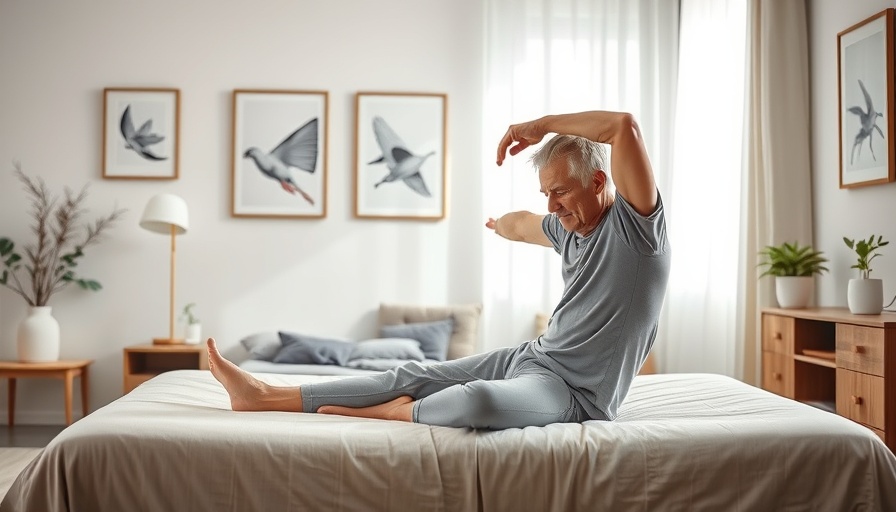
Understanding Tight Legs and Back Pain: A Common Concern
Tight legs and back pain are two issues that many people experience, and they often go hand in hand. Whether you're sitting at a desk for hours or engaging in physical activities, these discomforts can surface unexpectedly. It’s important to understand the roots of these problems to address them effectively.
In "Tight Legs or Back Pain? Sit on the Bed and Do This!", the discussion dives into effective exercises for common pain issues, exploring key insights that sparked deeper analysis on our end.
Simple Bed Exercises to Alleviate Pain
Dr. Mandell’s video, "Tight Legs or Back Pain? Sit on the Bed and Do This!" provides some simple yet effective exercises that can be done right on your bed. These movements aim to stretch and strengthen the muscles in the legs and back, promoting better blood circulation, flexibility, and overall well-being. This method can be particularly beneficial after a long day at work or when you're feeling particularly stiff.
The Importance of Wellness in Daily Life
Maintaining wellness requires a commitment to a healthy lifestyle that includes regular movement, mindful eating, and mental health management. Engaging in activities that relieve tension, such as the exercises suggested by Dr. Mandell, contributes to your body's health. Regular exercise improves physical strength and endurance, which is essential in alleviating back and leg pain, thereby enhancing your quality of life.
Stress Relief Through Movement
Movement is one of the most effective forms of stress relief. When we take the time to stretch and exercise, we release endorphins – the body’s natural painkillers. This not only alleviates physical pain but also combats feelings of anxiety and stress that we may accumulate throughout the day. Incorporating exercise into your daily routine—even if it is as simple as stretching on your bed—can contribute significantly to both mental and physical health.
How Does Home Comfort Aid Recovery?
Performing exercises in the comfort of your home can have numerous psychological benefits. Many people feel more relaxed and open to trying new health practices in an environment where they feel safe. By sitting on your bed, you can carry out these stretches without the pressure of public spaces or gym settings, making it easier to incorporate fitness into your life.
Holistic Approaches to Pain Relief
Pain relief isn't always about medications or invasive therapies. Exploring holistic approaches such as yoga, mindfulness, and a balanced diet can significantly help reduce symptoms of chronic discomfort, including back pain and leg tightness. Practices like meditation can also enhance your overall mental wellness, creating a harmonious balance between mental and physical health.
Action Steps to Enhance Your Health
Incorporating small, actionable steps into your daily routine can lead to big changes. Here are a few tips to help you get started:
- Hydrate: Drink plenty of water throughout the day to maintain flexibility and health.
- Incorporate Stretching: Spend a few minutes every day stretching, focusing on your back and legs.
- Mindful Eating: Consume a nutritious diet rich in vitamins and minerals to support your body.
- Engage in Regular Exercise: Aim for at least 30 minutes of physical activity most days of the week.
Find Encouragement and Stay Motivated
The journey to wellness isn’t always easy—it requires effort, discipline, and sometimes a little help. Finding supportive communities, whether they’re online or in-person, can foster motivation and encouragement. Share your experiences and listen to the journeys of others to inspire and uplift one another!
Final Thoughts
By taking small steps to integrate movement into your life, such as doing the bed exercises discussed in Dr. Mandell’s video, you can create a positive change in your bodily health and mental outlook. Remember, your wellness journey is unique, and every effort counts!
 Add Row
Add Row  Add
Add 




Write A Comment